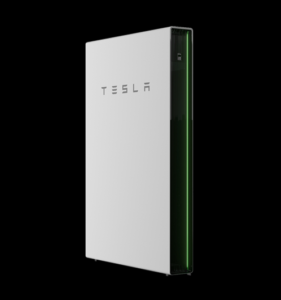Adding battery storage to your solar panel system.
In recent years, integrating battery storage with solar panel systems has emerged as a transformative solution for homeowners and businesses looking to maximise their investment in renewable energy. By storing excess energy produced during peak sunlight hours, these batteries provide a reliable power source when sunlight is scarce, such as during the evening or on cloudy days. This article delves into the benefits, considerations, and steps of adding battery storage to your solar panel setup.
The Benefits of Battery Storage
- Energy Independence: Battery storage systems allow you to store surplus solar energy generated during the day for use at night or during power outages, reducing your reliance on the grid. This autonomy provides peace of mind and shields you from electricity price fluctuations and blackout vulnerabilities.
- Increased Efficiency: With a battery system, you can capture and utilise a more significant percentage of the solar energy you produce, significantly improving the overall efficiency of your solar panel system and more savings on your energy bill.
- Environmental Impact: By optimising renewable energy, battery storage helps reduce the need for fossil-fuel-based power generation, leading to lower greenhouse gas emissions and a smaller carbon footprint.
Considerations Before Adding Battery Storage
- Energy Needs: Evaluate your energy consumption patterns to determine the size and capacity of the battery storage system you need. This assessment will help ensure that your system can adequately meet your power needs during periods without sunlight.
- Budget: The cost of adding battery storage can vary widely depending on the capacity and brand. While prices have been decreasing, it’s essential to consider your budget and the potential return on investment. Incentives and rebates may be available to help offset the initial cost.
- Compatibility: Ensure that your existing solar panel system is compatible with the addition of battery storage. Some older systems may require modifications or upgrades. It’s wise to consult a professional to assess compatibility and explore the best setup options.
- Installation and Maintenance: Get it installed by a professional so your battery storage system integrates with your solar panels. Additionally, consider the maintenance requirements and lifespan of the battery system to keep it operating efficiently over time.
Steps to Adding Battery Storage
- Assessment: Start by assessing your energy usage, storage needs, and financial goals. This step is crucial for determining the right size and type of battery for your system.
- Research: Investigate the battery storage systems available to understand their pros and cons. Look into any local incentives or rebates that could make the addition more affordable.
- Consultation: Consult a reputable solar energy company that can provide detailed insights into the best battery storage solutions for your circumstances. They can also help navigate regulatory requirements and ensure your system complies with local codes and standards.
- Installation: Choose a professional installer with experience integrating battery storage. Proper installation is vital to maximising the efficiency and lifespan of your battery storage.
- Monitoring and Maintenance: Monitor its performance and maintain it according to the manufacturer’s recommendations. Regular checks will help you catch and address any issues early, ensuring your system operates optimally.
Navigating Regulatory and Financial Landscapes
When adding battery storage to your solar panel system, staying informed about the regulatory landscape is crucial. Many regions offer incentives for renewable energy storage, such as tax credits, rebates, and net metering policies that can significantly reduce the cost of installation and operation. These incentives make the addition of battery storage more economically viable and encourage the adoption of green energy solutions. Researching and applying for these incentives requires diligence but can result in substantial savings and a faster return on investment.
Integrating smart home technology
Integrating smart home technology with battery storage systems is another trend gaining momentum. These systems allow for real-time monitoring and automated control of energy usage, enhancing the efficiency and convenience of managing your solar and storage system.
As these technologies become more accessible, they will play a crucial role in maximising the benefits of solar energy storage.
Community and Grid Contributions
Adding battery storage to your solar panel system doesn’t just benefit you; it can also contribute to the stability and sustainability of the local power grid. In areas with net metering policies, excess energy stored in your batteries can be sold back to the grid, providing clean energy to the community and generating additional income for you. Furthermore, during peak demand times or outages, battery storage can relieve pressure on the grid, helping to prevent brownouts and blackouts.
Some regions are exploring the concept of virtual power plants (VPPs), aggregating the excess energy from residential battery storage systems to supply power to the grid when needed.
Conclusion
Adding battery storage to solar panels represents a significant step forward in the journey toward energy independence and sustainability. While it involves carefully considering financial, technical, and regulatory factors, the benefits—ranging from reduced energy costs and increased efficiency to a smaller carbon footprint and enhanced grid stability—are profound.

 Sungrow Residential Battery Systems
Sungrow Residential Battery Systems Tesla Powerwall
Tesla Powerwall